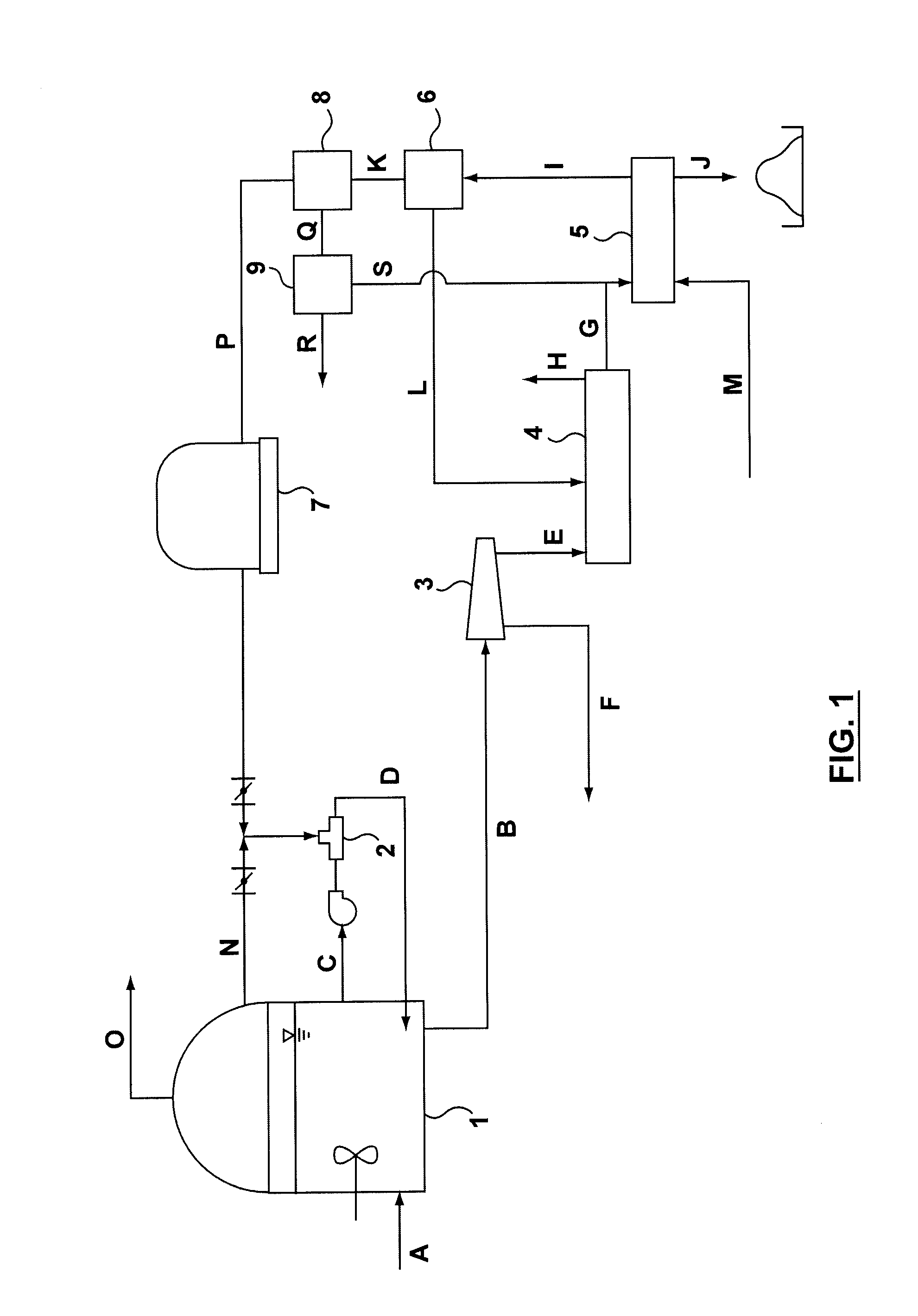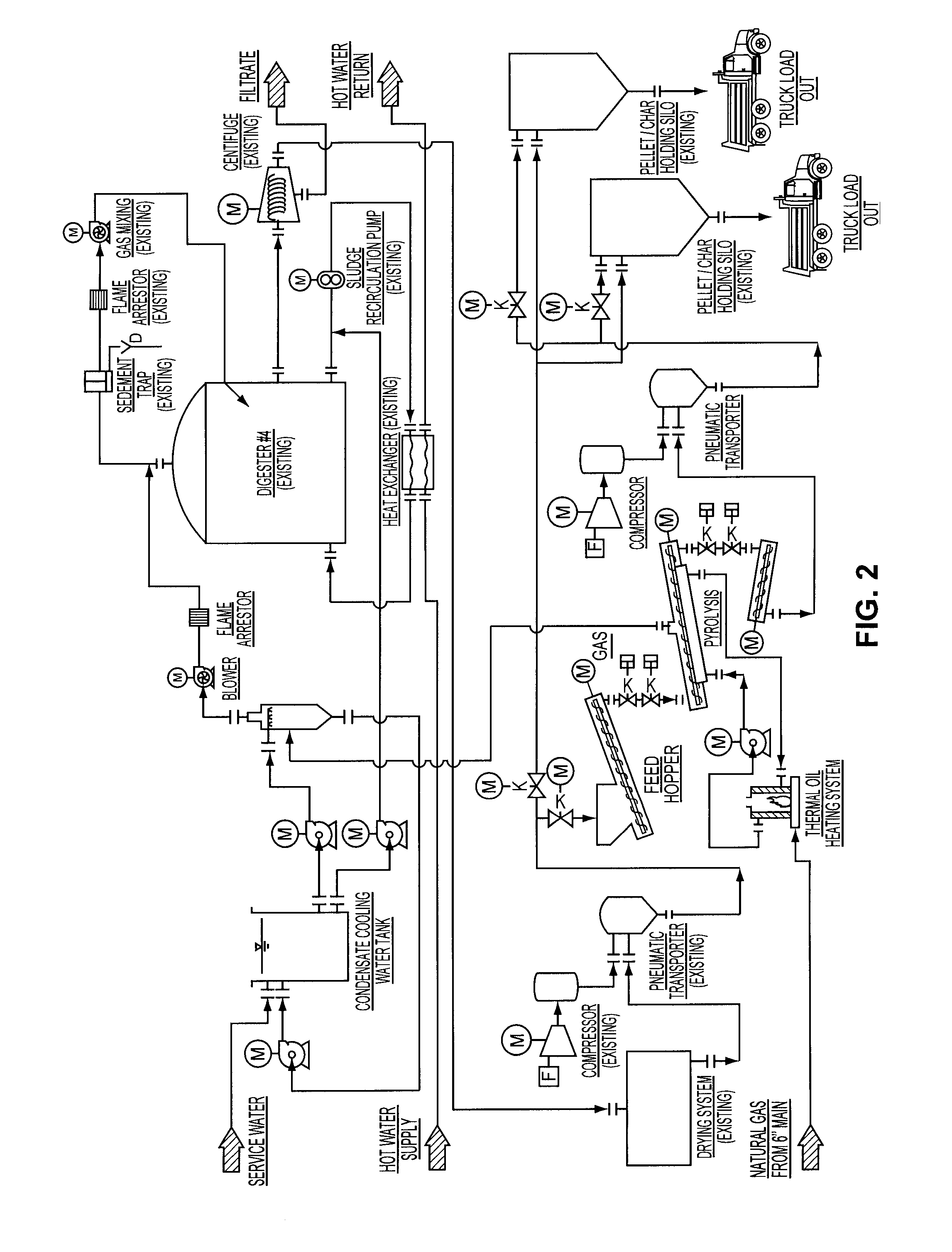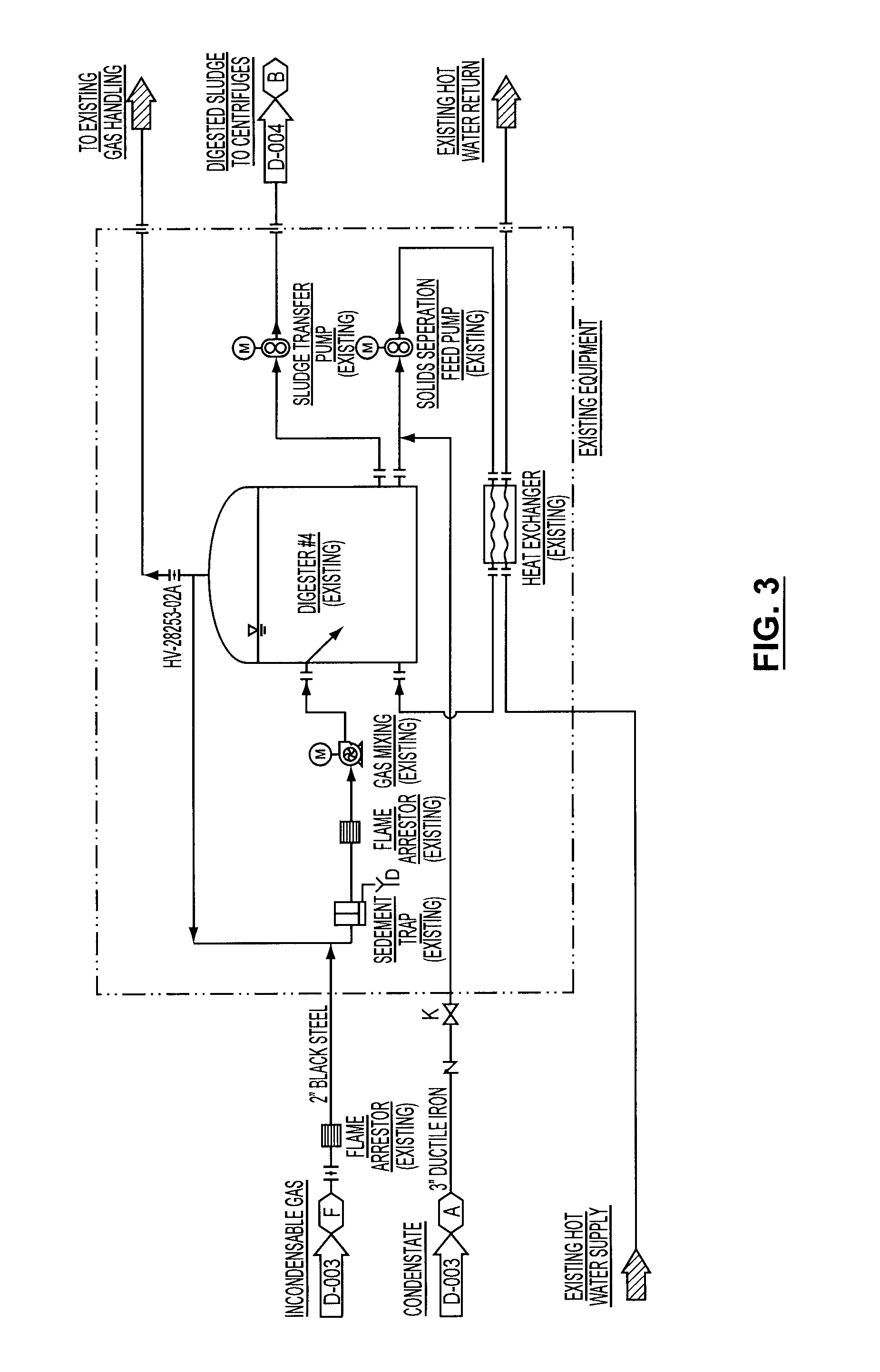Anaerobic digestion and pyrolysis system
a pyrolysis and anaerobic digestion technology, applied in the field of wastewater treatment, anaerobic digestion, wastetoenergy processes and pyrolysis, can solve the problems of large majority of biogas flared or otherwise wasted, and the inability to recover biogas as a fuel from all but the largest municipal sewage plants
- Summary
- Abstract
- Description
- Claims
- Application Information
AI Technical Summary
Benefits of technology
Problems solved by technology
Method used
Image
Examples
Embodiment Construction
[0023]In this specification, the term pyrolysis includes pyrolysis and gasification. The word digestate is sometimes used to refer to only the solids fraction of the sludge produced by an anaerobic digester but in this specification digestate typically refers to the whole digester sludge.
[0024]There is experimental evidence that syngas can be converted through anaerobic digestion to biogas containing mainly methane. CO in the syngas is used as a substrate or food for certain strains of methanogenic archea in direct reactions that include hydrogen and water to produce methane. Other indirect reactions also occur, wherein CO and H2 are converted to acetate or methanol and finally to methane by anaerobic bacteria. Regardless of the specific reaction, the methane yield is 0.25 mol of CH4 per mol of CO, plus 0.25 mol of CH4 per mol of H2. Based on the range of CO and H2 typically contained in syngas, this is equivalent to about 0.2 to 0.4 standard m3 of methane production per kilogram of...
PUM
| Property | Measurement | Unit |
|---|---|---|
| hydraulic retention time | aaaaa | aaaaa |
| temperatures | aaaaa | aaaaa |
| diameter | aaaaa | aaaaa |
Abstract
Description
Claims
Application Information
 Login to View More
Login to View More - R&D
- Intellectual Property
- Life Sciences
- Materials
- Tech Scout
- Unparalleled Data Quality
- Higher Quality Content
- 60% Fewer Hallucinations
Browse by: Latest US Patents, China's latest patents, Technical Efficacy Thesaurus, Application Domain, Technology Topic, Popular Technical Reports.
© 2025 PatSnap. All rights reserved.Legal|Privacy policy|Modern Slavery Act Transparency Statement|Sitemap|About US| Contact US: help@patsnap.com



